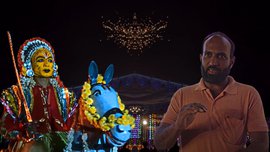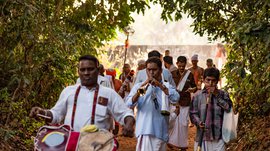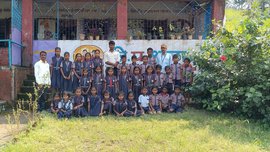“It is difficult to paint our bodies. We have to stay awake all night [to do it],” says Ayush Nayak who is applying oil paints on his body for the first time. “My body feels like it’s burning. So, we have to dry the paint as soon as possible,” says the 17-year-old.
Ayush is one of many young boys and girls in coastal Karnataka who paint their bodies in brightly coloured stripes in preparation for pili vesha (also known as huli vesha ), a folk dance performed during the festivals of Dussehra and Janmashtami. During the performance they growl and dance wearing tiger masks as loud drums reverberate around them.
Pili refers to a tiger and vesha is make-up in Tulu, a language spoken on the coast of Karnataka. “You don't need to learn anything from anyone. This is in our soul,” says Virendra Shettigar who has been performing pili vesha for the last 22 years. “The sounds of the drums and the energy around will make you dance to the beats,” he adds. The 30-year-old works as a distributor at Amazon and encourages young people from his village to perform.
The dancers paint themselves all over in yellow and brown stripes of acrylic paint to resemble tigers, leopards and panthers. Earlier charcoal, mud, roots and fungi were the sources of the vibrant body paint on the tiger dancers.
Over the years, the traditional steps in this dance routine have become acrobatic with more emphasis on stunts such as forward and reverse flips, breaking coconuts with one’s head, fire breathing and more. And the choreography is so physically demanding that older folks have left it to the young to carry on this traditional dance.
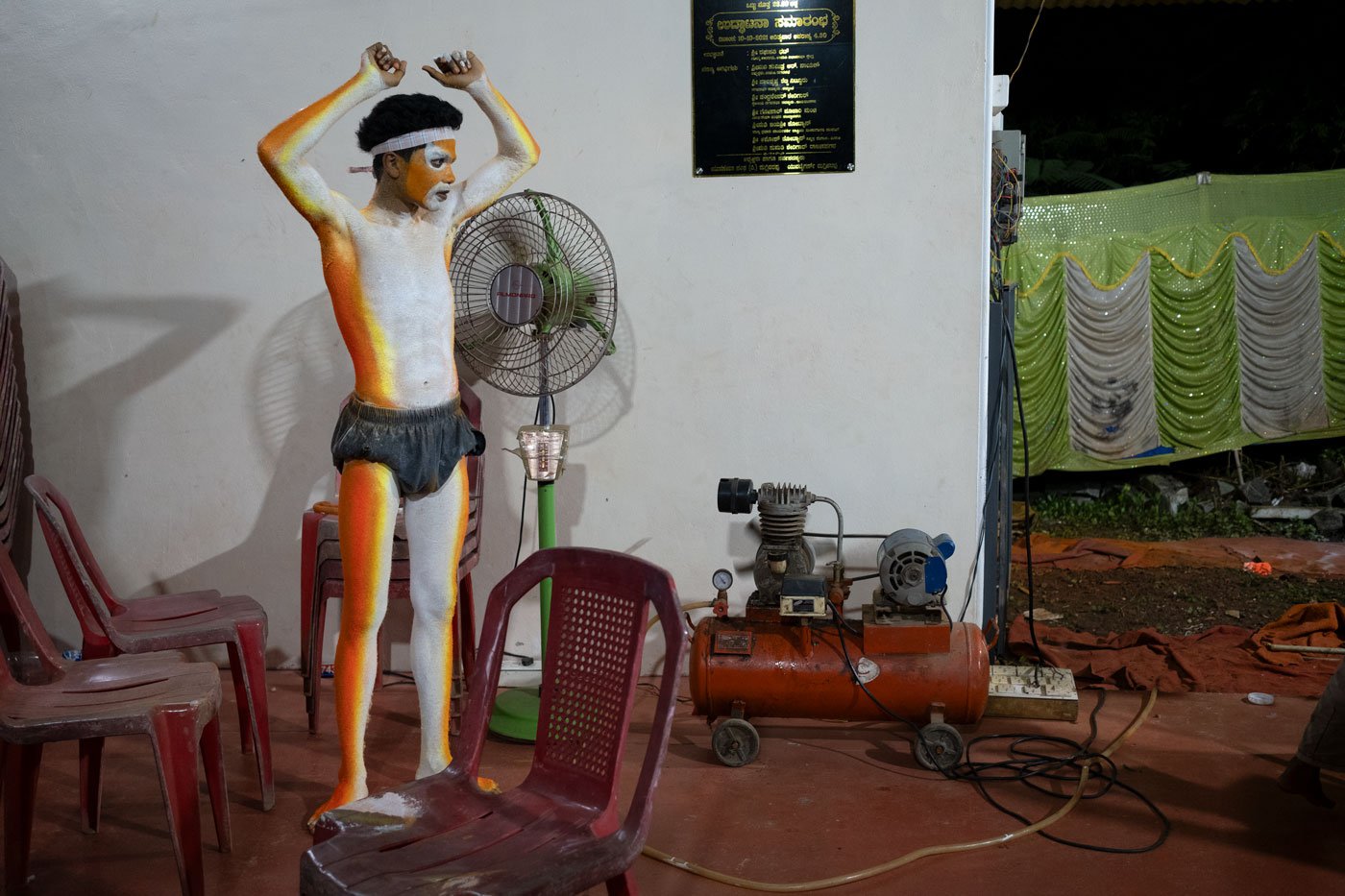
Ayush Nayak is one of many young boys and girls in coastal Karnataka who paint their bodies in brightly coloured stripes in preparation for pili vesha , a folk dance performed during the festivals of Dussehra and Janmashtami
Preparation for this traditional dance begins a day before the performance. The painting of bodies and faces requires hours of labour, and is kept on for a couple of days until the festivities are over. “At first, this feels difficult. But after hearing the sounds of the drums, you feel like dancing to the beats,” says Ayush who is completing his Class 12 studies.
Set to the resonating beats of the tase (drum), people painted as pili , dance to show their reverence as well as entertain people. While the boys paint their bodies to keep the tiger resemblance intact, the girls only get their faces painted and put on a tiger costume made of cotton. The participation of girls in pili vesha has increased only in recent times.
Performing groups were earlier awarded rice and paddy – crops that are commonly grown in coastal Karnataka – for their show. Today money has replaced foodgrains. Each performer can earn about Rs. 2,500 for two days. The dancer who performs stunts earns an extra Rs. 6,000 for both days of the celebration. “After seeing so many people dance, you automatically feel like performing pili vesha ,” adds Ayush.
Shows are usually organised by committees of housing colonies. Ayush and his teammates are from the Yuva Tigers Manchi group who fund pili vesha celebrations throughout the year in Manipal, Udupi. Over two lakh rupees is required to organise the performances, and it goes to pay for painters and dancers. The expenses of travel, meals, paint supplies and costumes are also met by these funds.
Although public entertainment is a priority for the dancers, the performance adheres to a number of norms to preserve the discipline of this supposedly centuries-old tradition. At the end of the day, “our bodies hurt a lot, but we do it to entertain people and keep this tradition alive,” says Ayush.
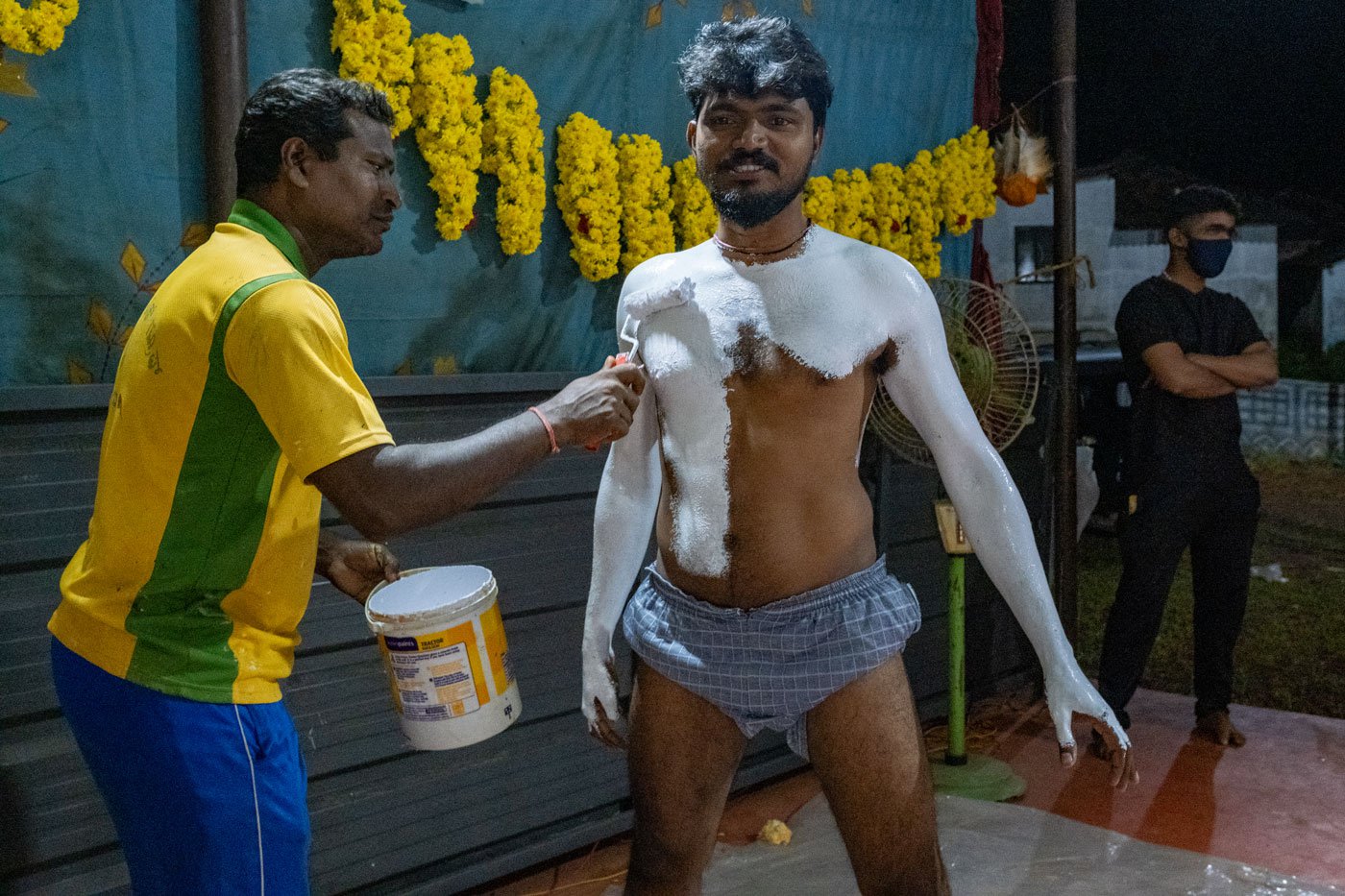
Ramzan paints Ashwith Poojari ahead of the performance. A clay model artist by profession, Ramzan lends a hand to performances during the season
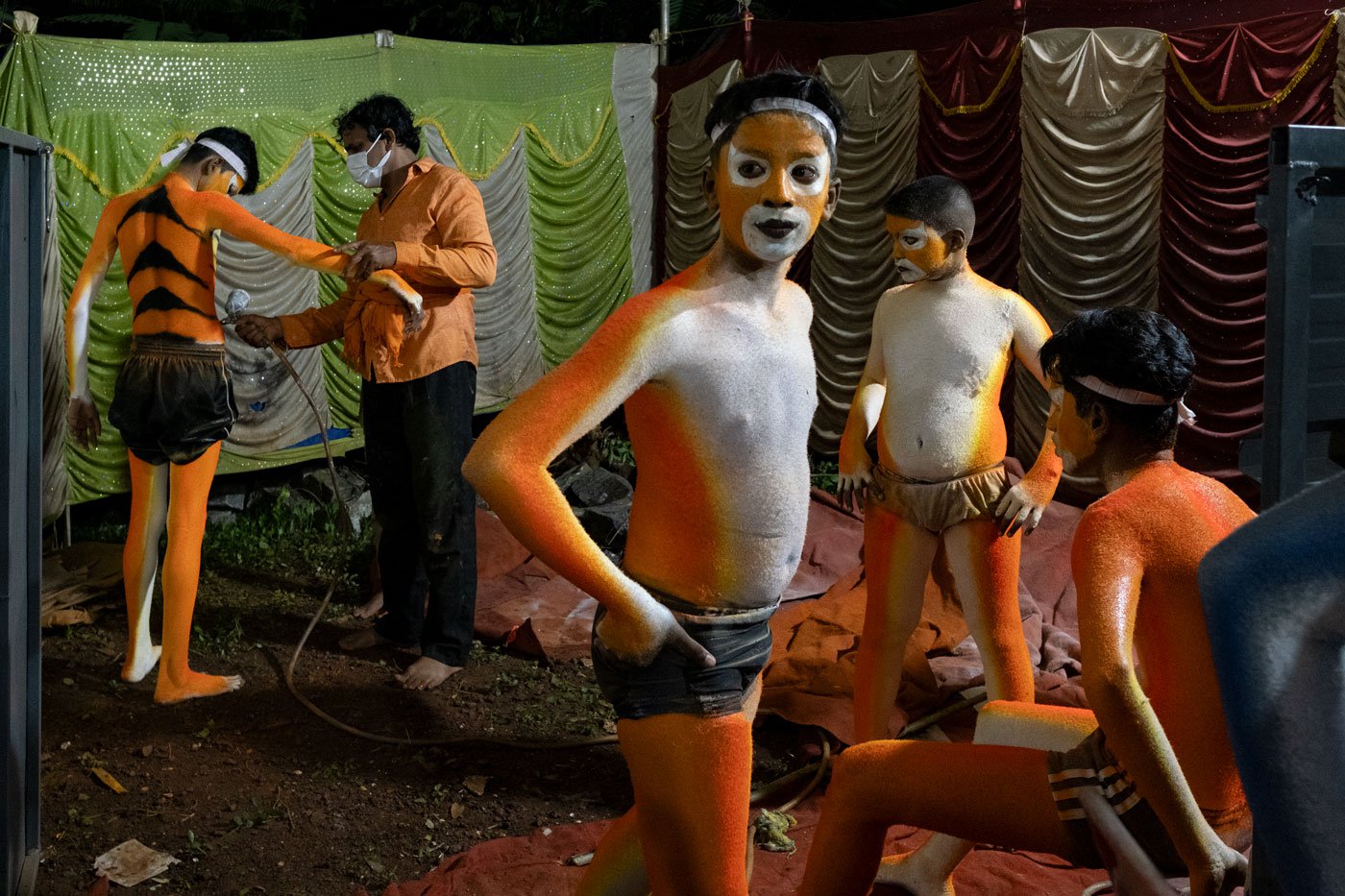
(Left to right) Nikhil, Krishna, Bhuvan Amin and Sagar Poojari wait for their turns as Jayakar Poojari paints tiger stripes on their bodies
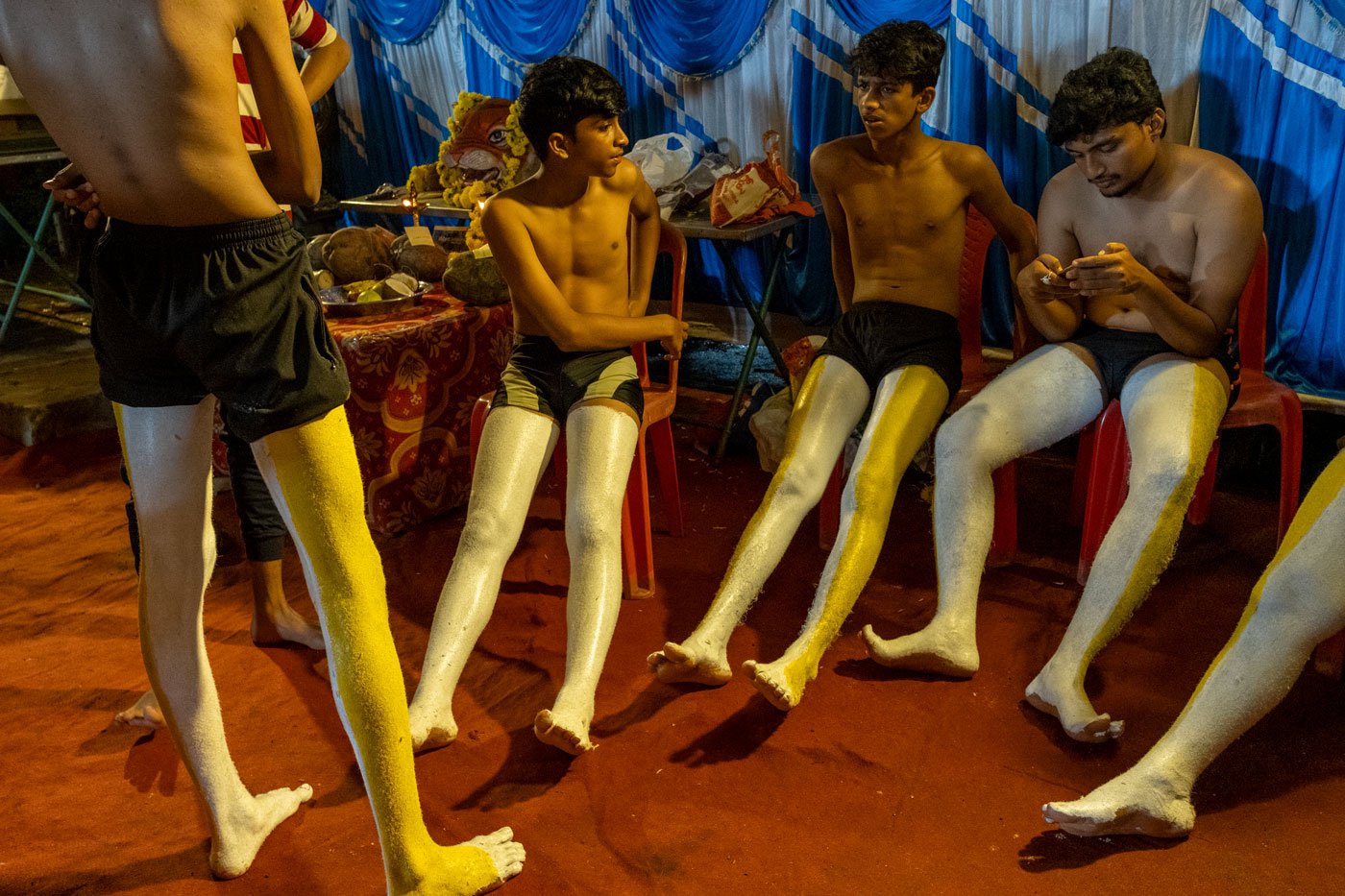
(Left to right) Shreyan Shetty , Ashlesh Raj and Karthik Acharya waiting for the first coat of paint to dry. The painting of bodies and faces requires hours of labour
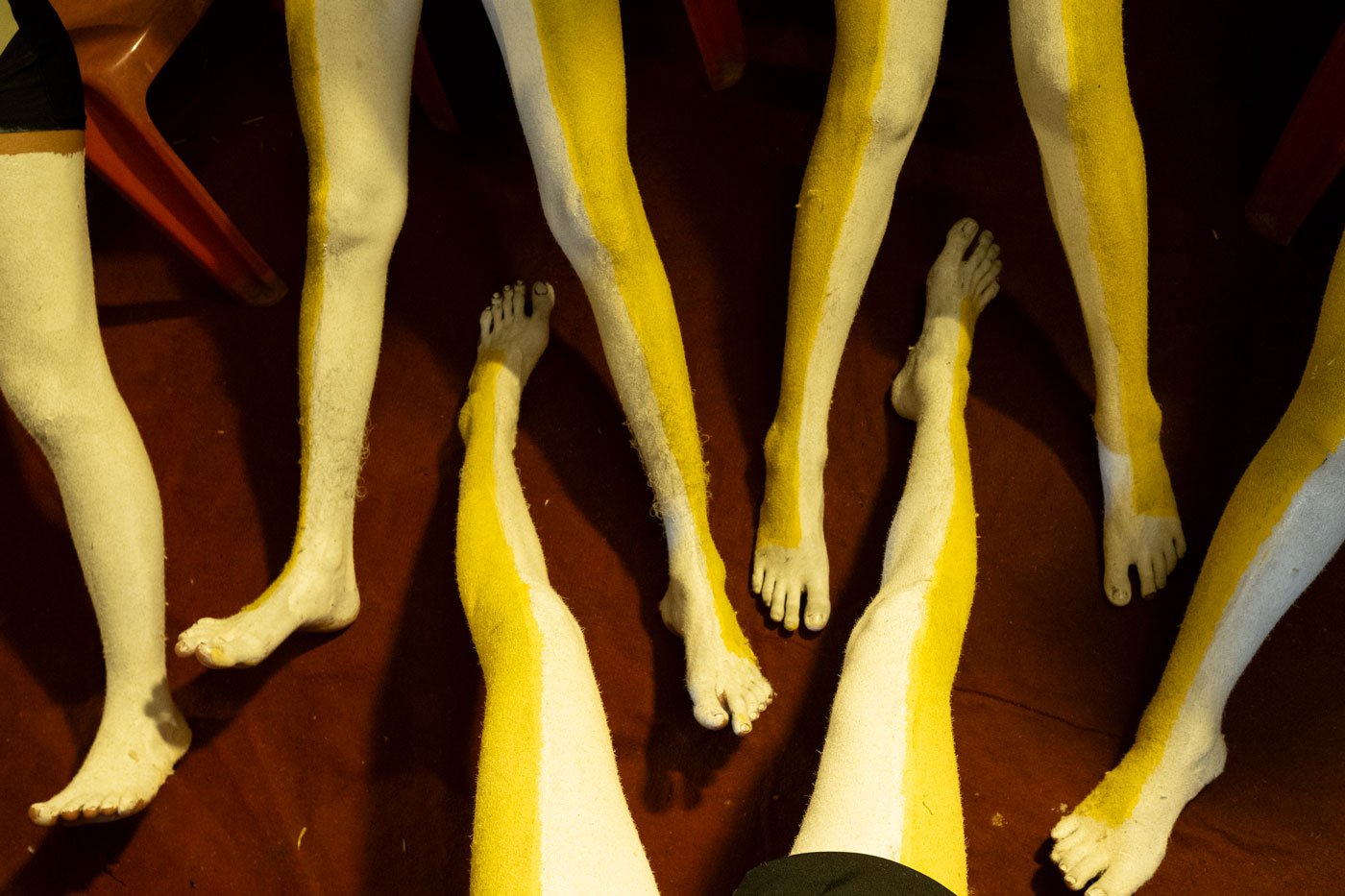
Dancers paint themselves all over in yellow, white and brown stripes using acrylic paint to resemble tigers, leopards and panthers. Earlier paint was made from charcoal, mud, roots and fungi
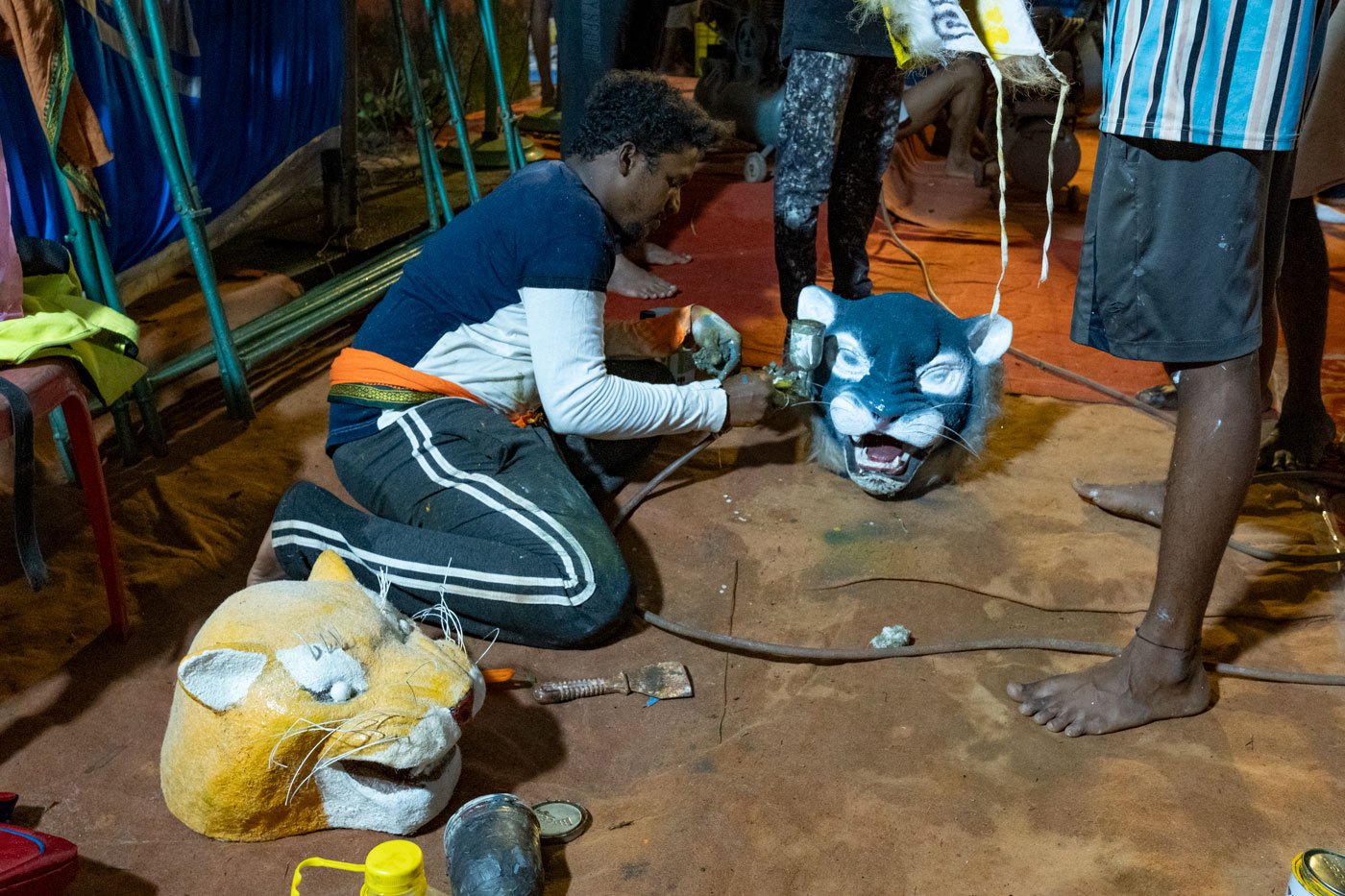
During pili vesha performance, the dancers growl and dance wearing tiger masks which are also hand painted
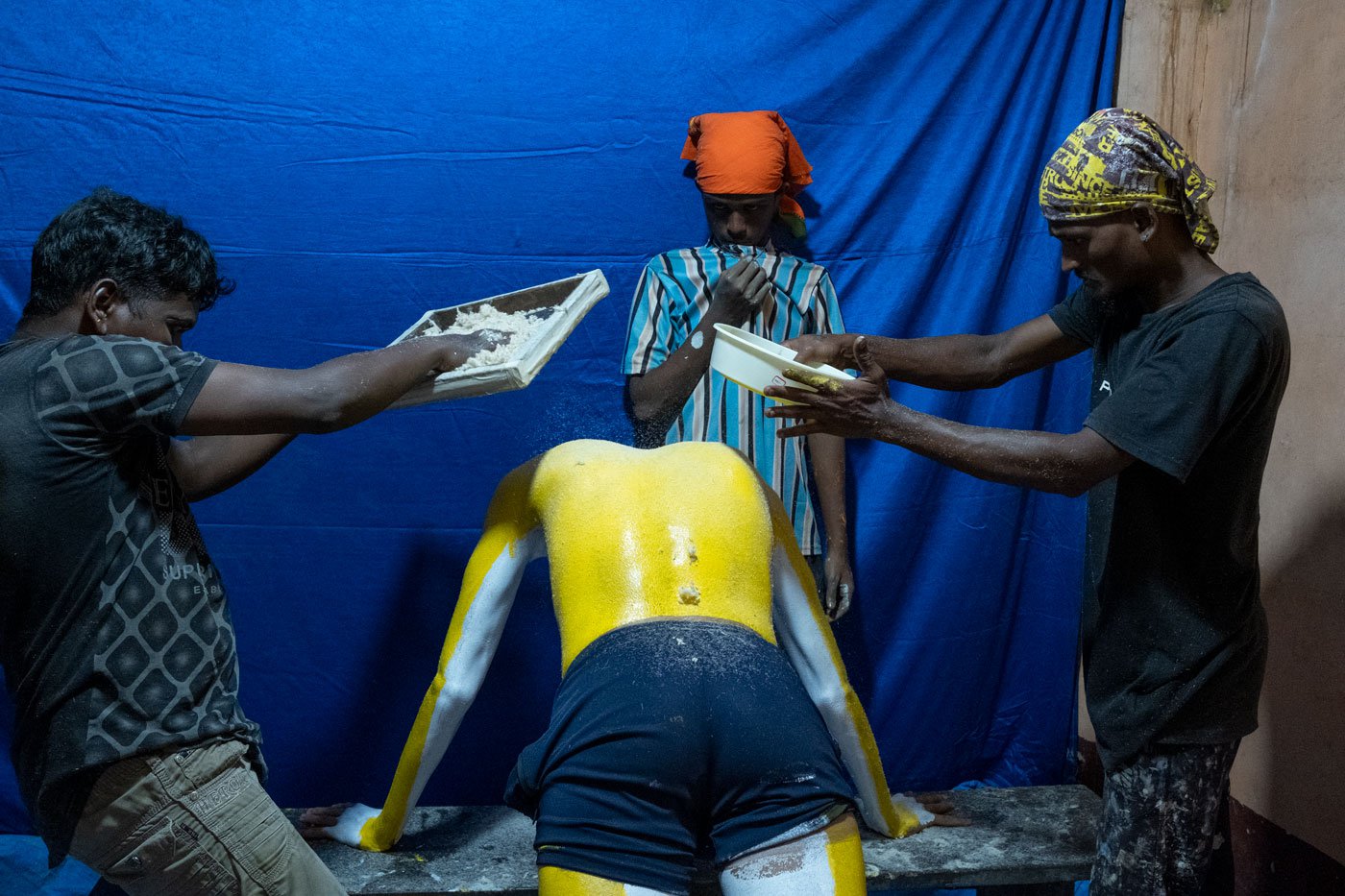
Sheep hair is sprinkled on the painted bodies to simulate the texture of a tiger
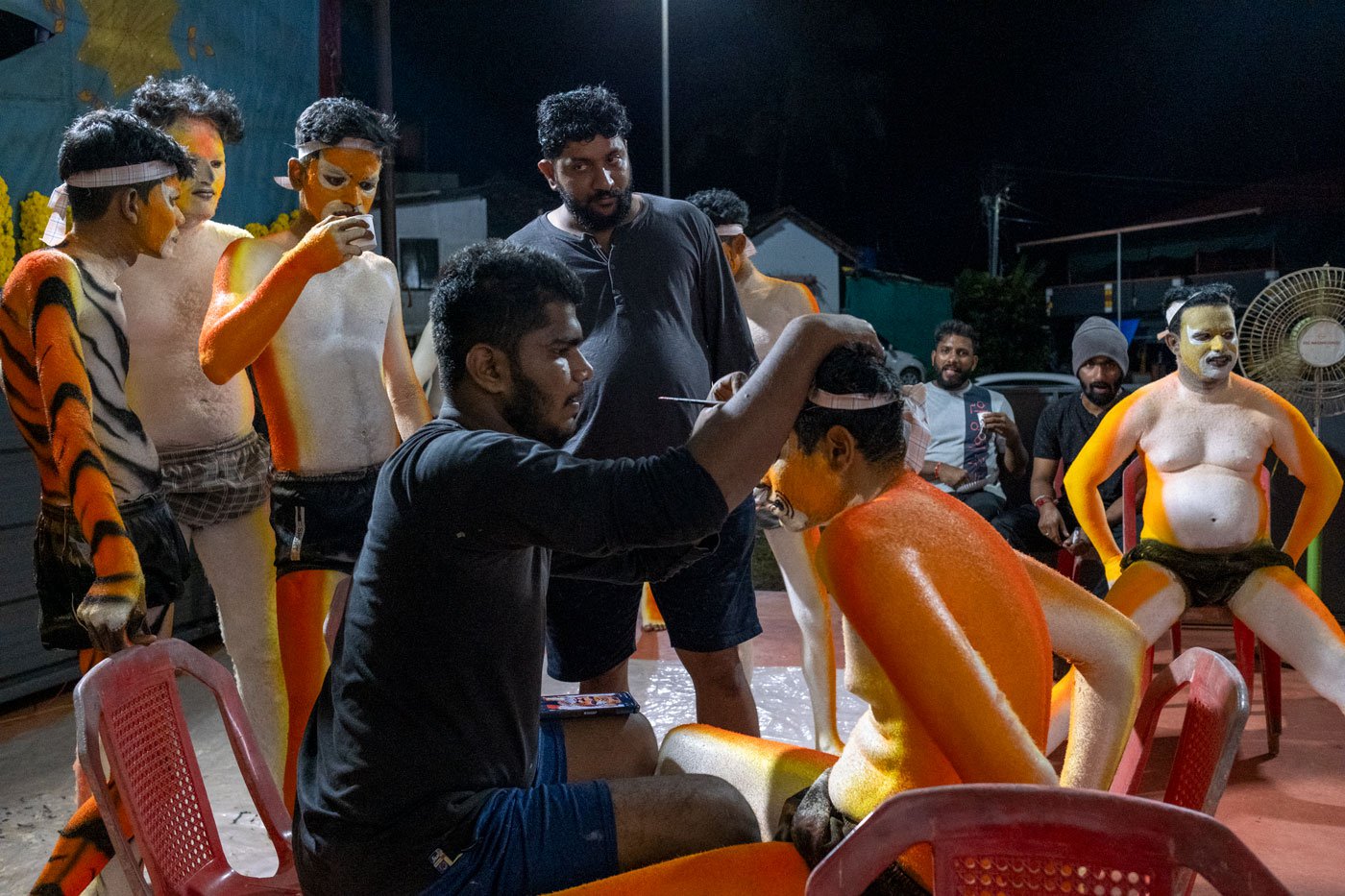
Sandesh Shetty paints Ashwith Poojari ahead of the performance. Ashwith and his teammates are from the Yuva Tigers Manchi who fund pili vesha celebrations throughout the year in Manipal, Udupi
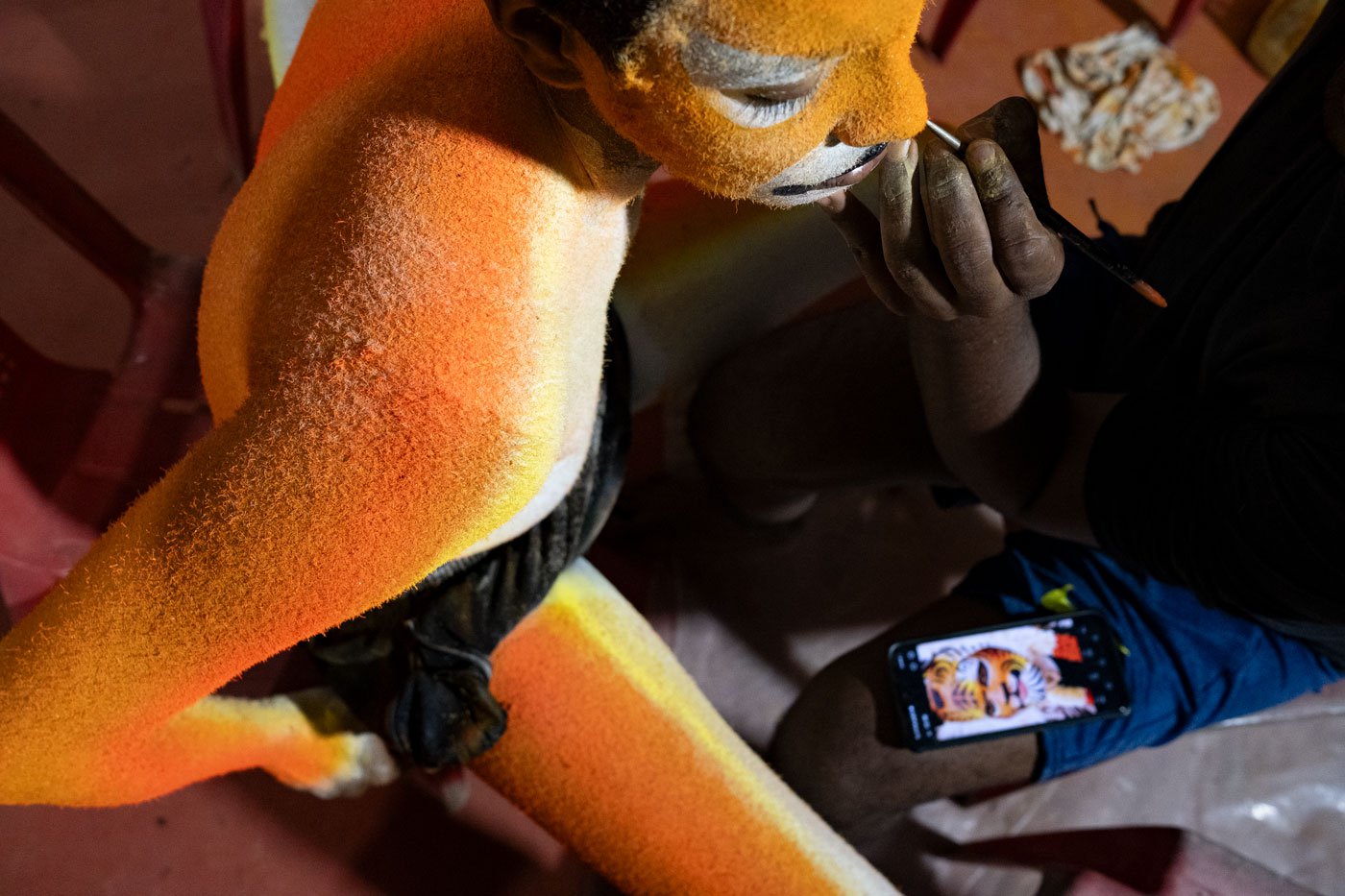
Make-up, vesha in Tulu, is an integral part of this folk art. It is kept on for a couple of days until the festivities are over
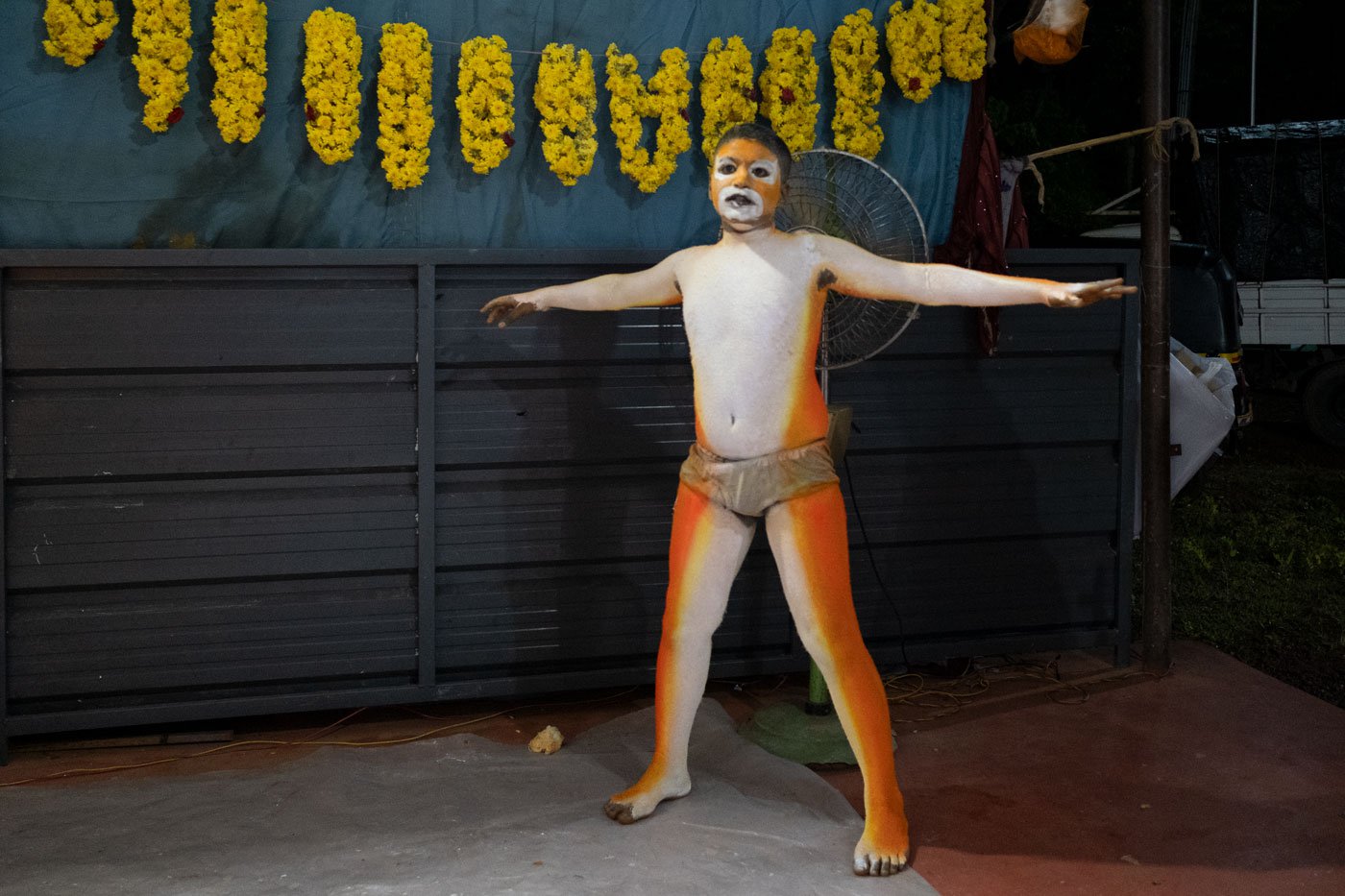
Bhuvan Amin drying paint under the fan. 'This is my eighth time performing pili vesha ,' says the 11-year-old who has been participating in the dance since he was three
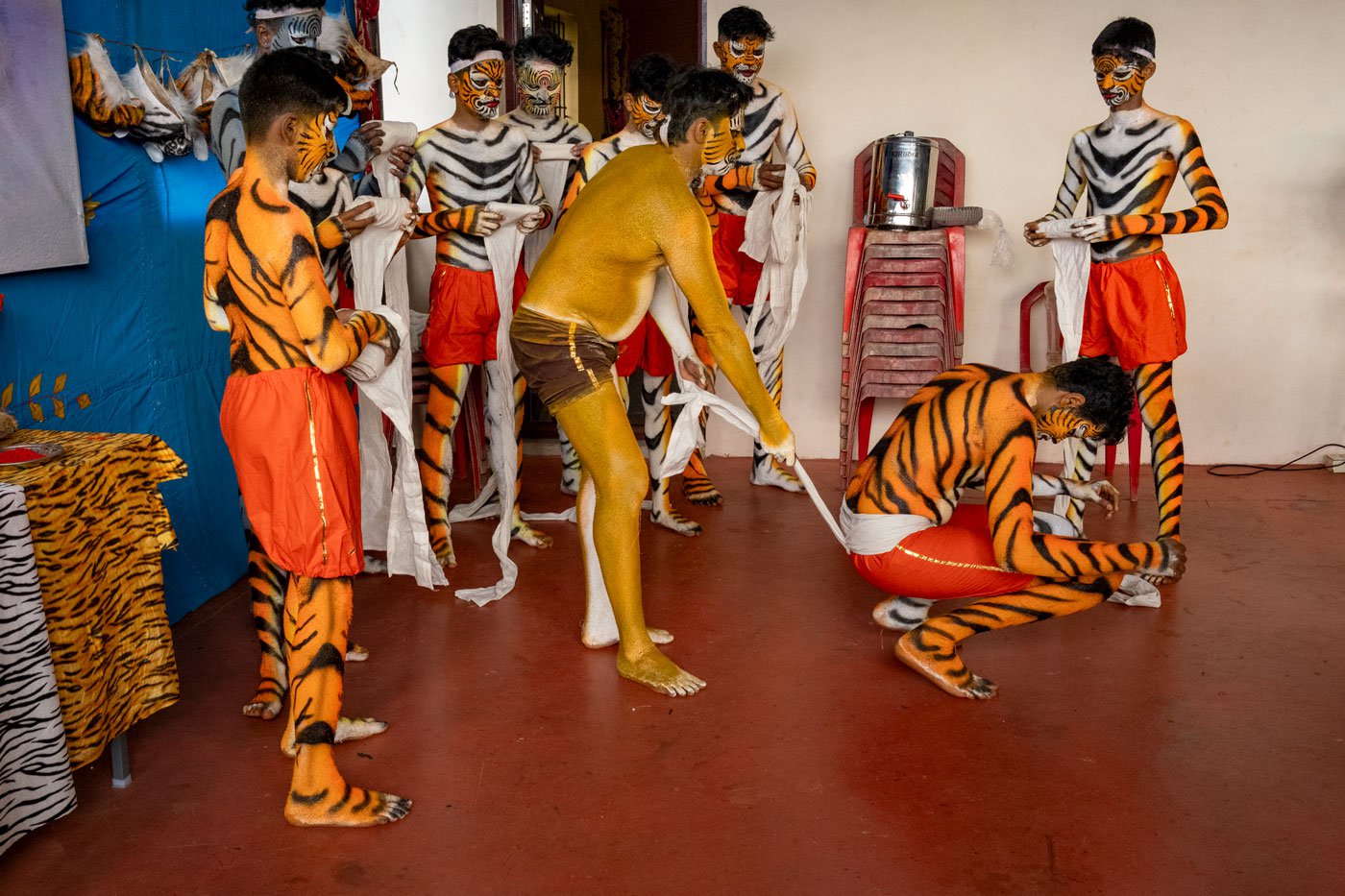
The long white cloth – jatti in Tulu – is tied through the waist for balance and support during lengthy performances. The jatti also keeps the costume intact during stunts
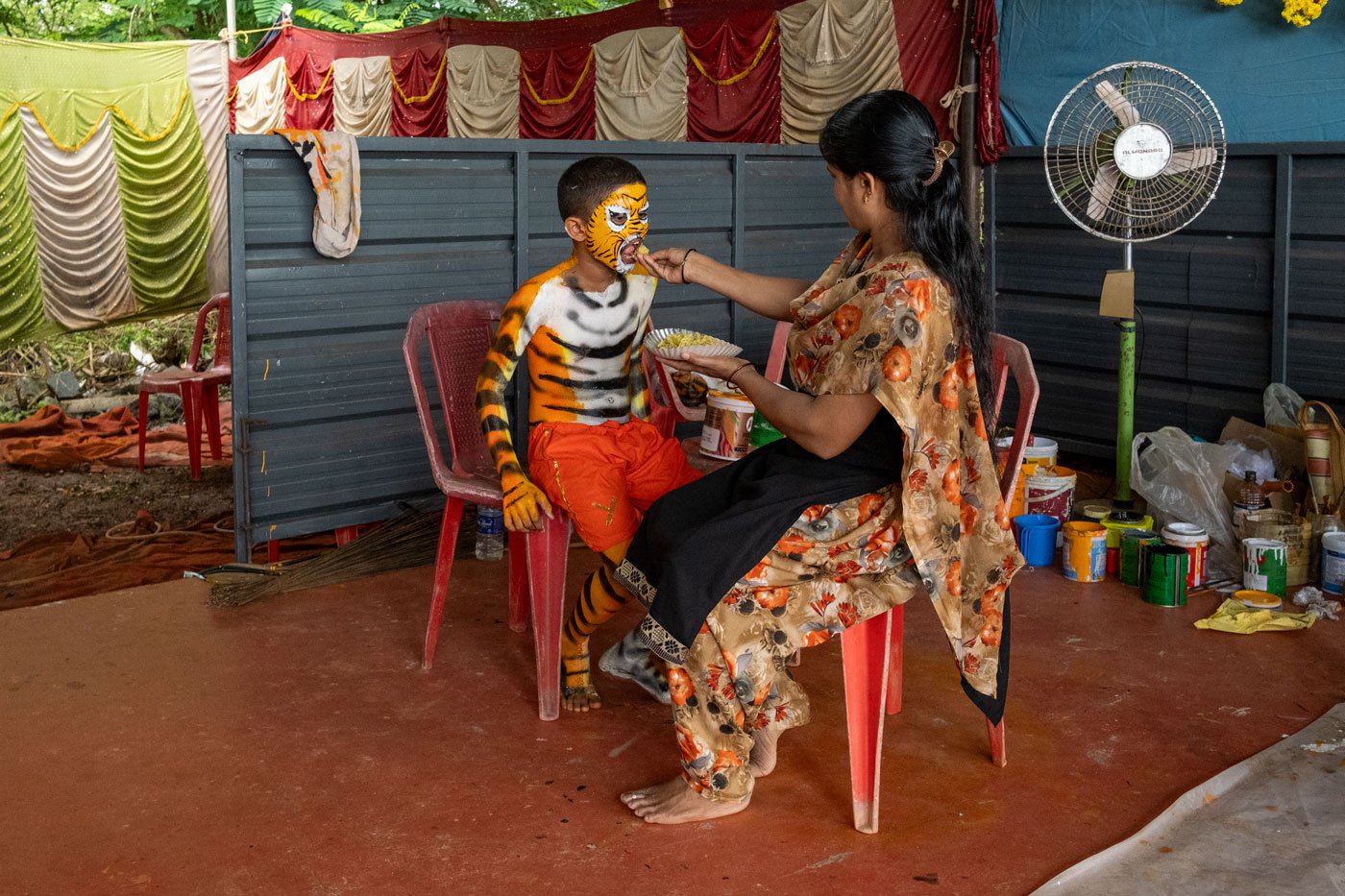
Abhinav Shetty will be performing the dance for the first time. His mother feeding the 10-year-old before the dance begins
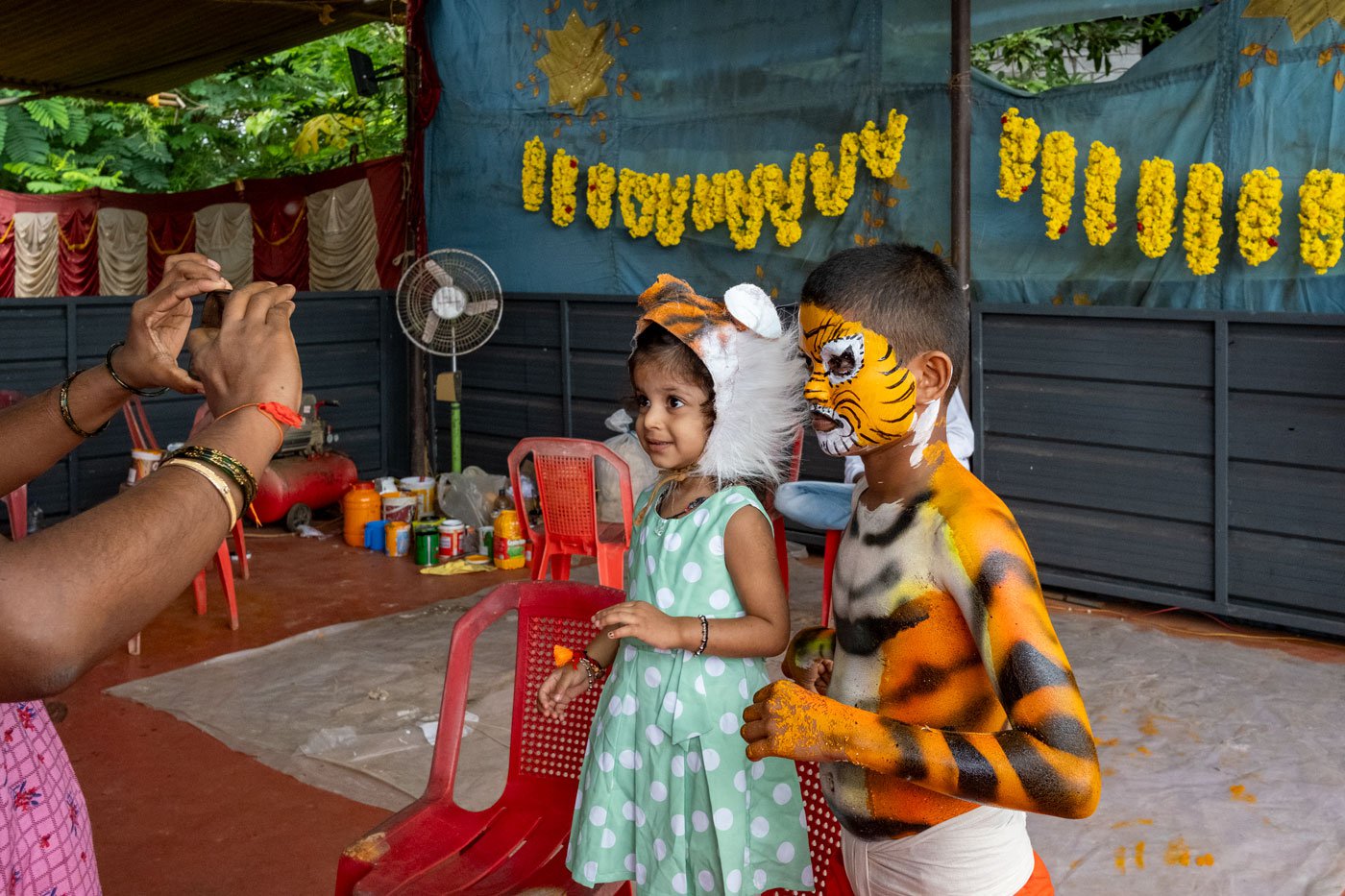
Abhinav posing for a photo with his sister just before the performance
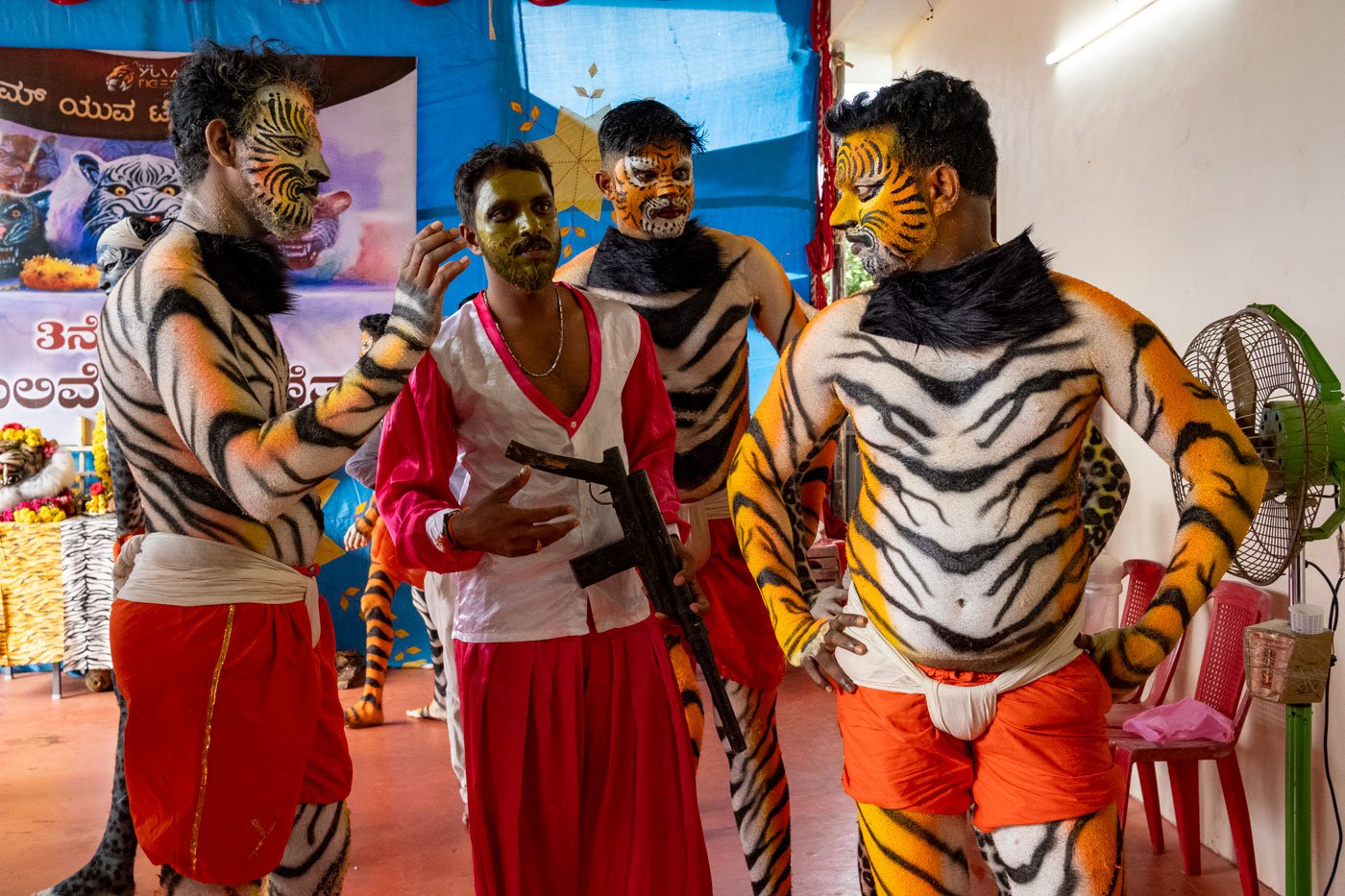
(Left to right) Sagar Poojari, Ranjith Hariharpura, Vishal and Naveen Nitoor getting ready for the performance
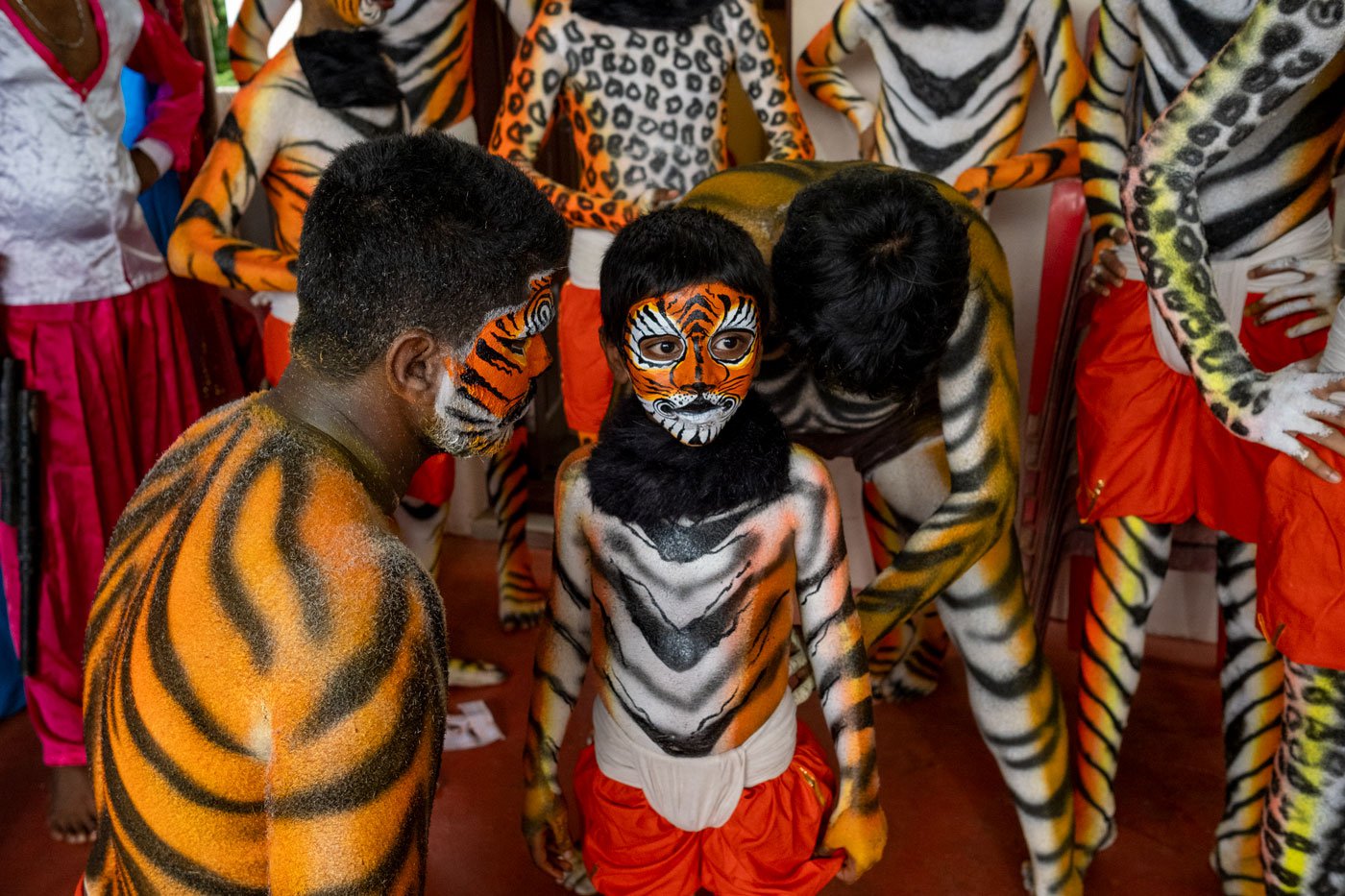
Amin has painted with oils since this will be his first performance. Other dancers, young but experienced, give instructions to Amin minutes before the show
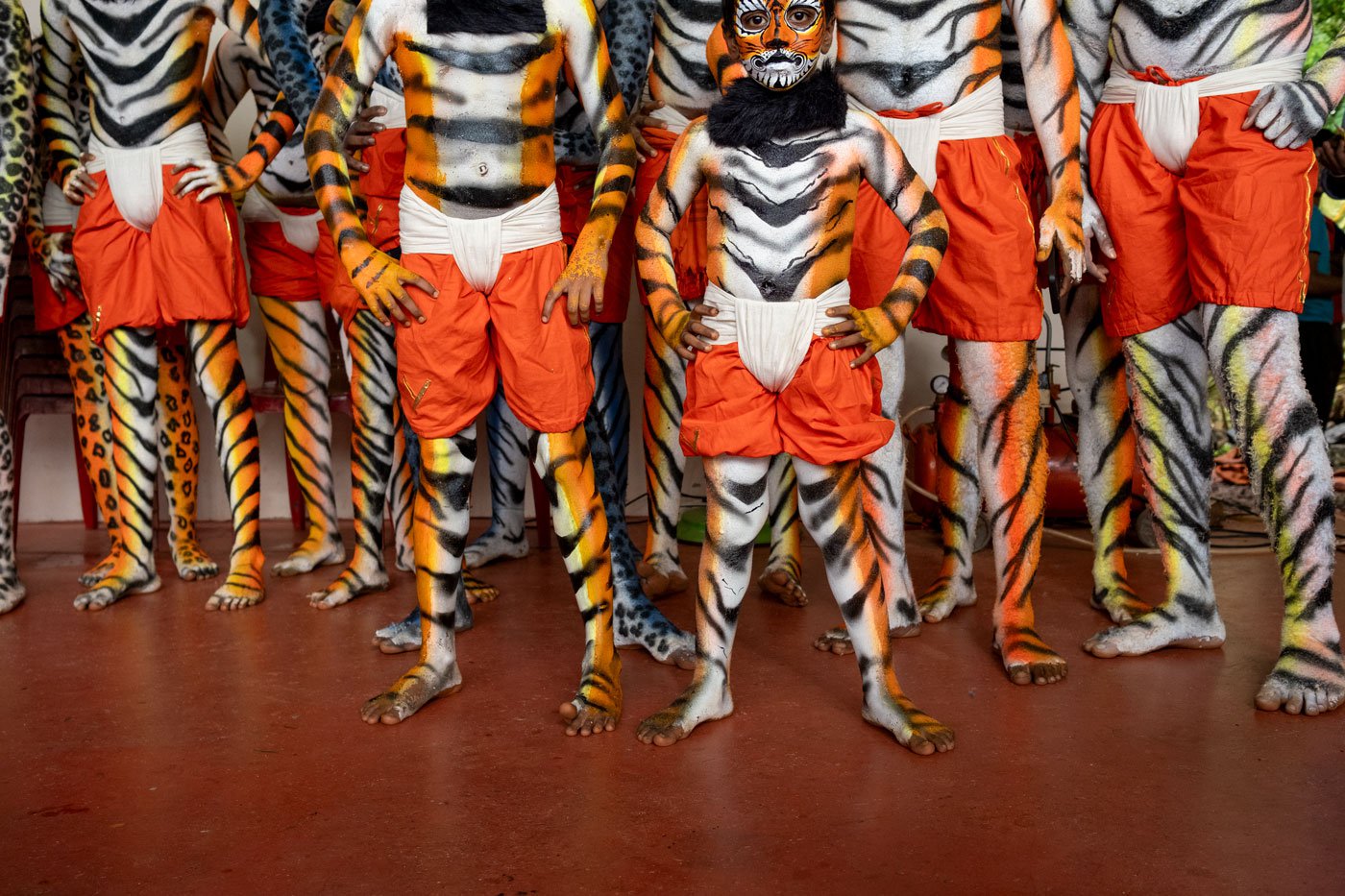
Yuva Tigers Manchi team posing for a photo – all ready to showcase their tiger dance choreography
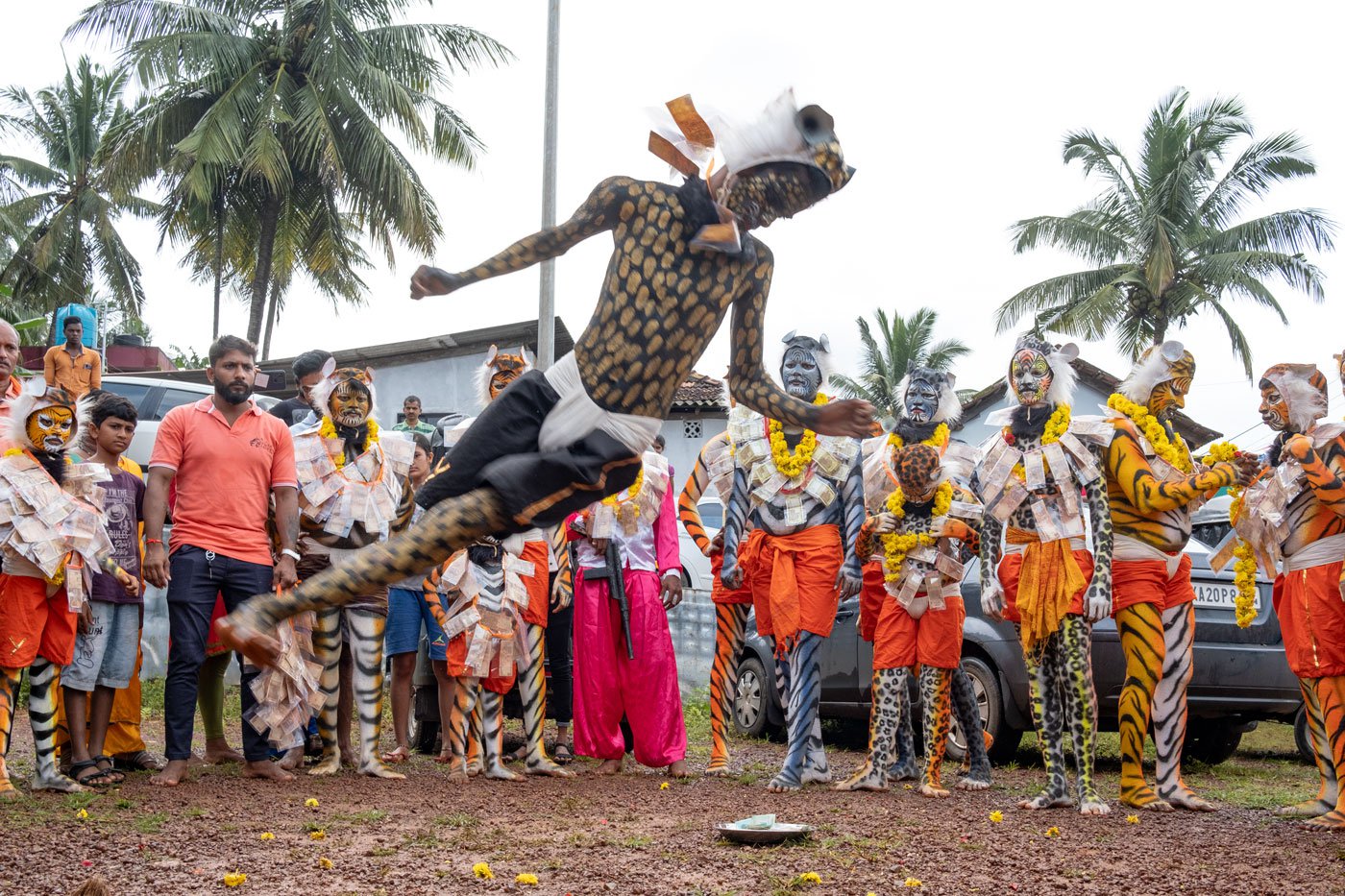
Prajwal Acharya painted as a black tiger shows his stunt skills. The traditional steps in this dance routine have become acrobatic with more emphasis on stunts
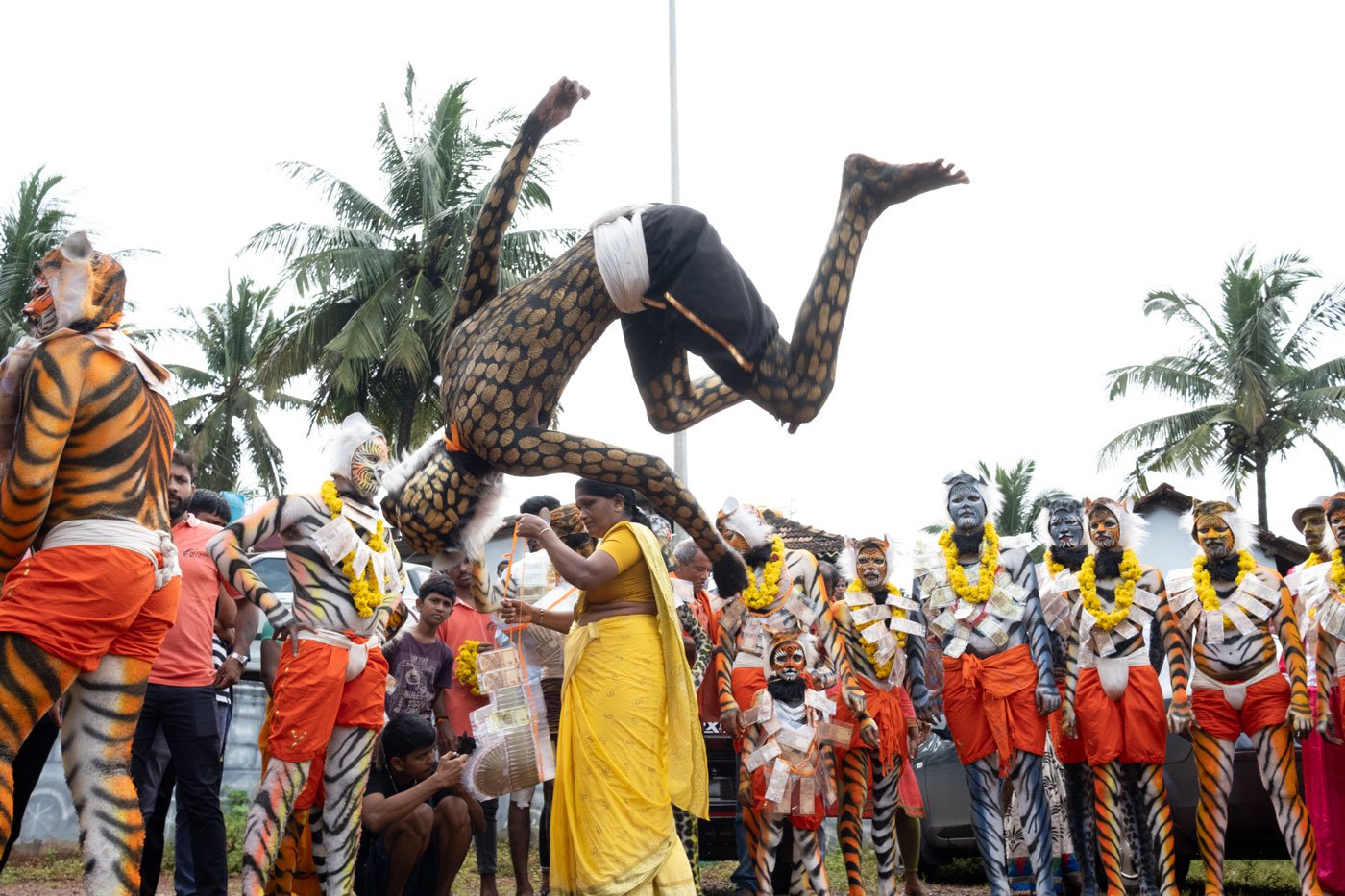
The stunts in this performance include forward and reverse flips, breaking coconuts with one’s head, fire breathing and more
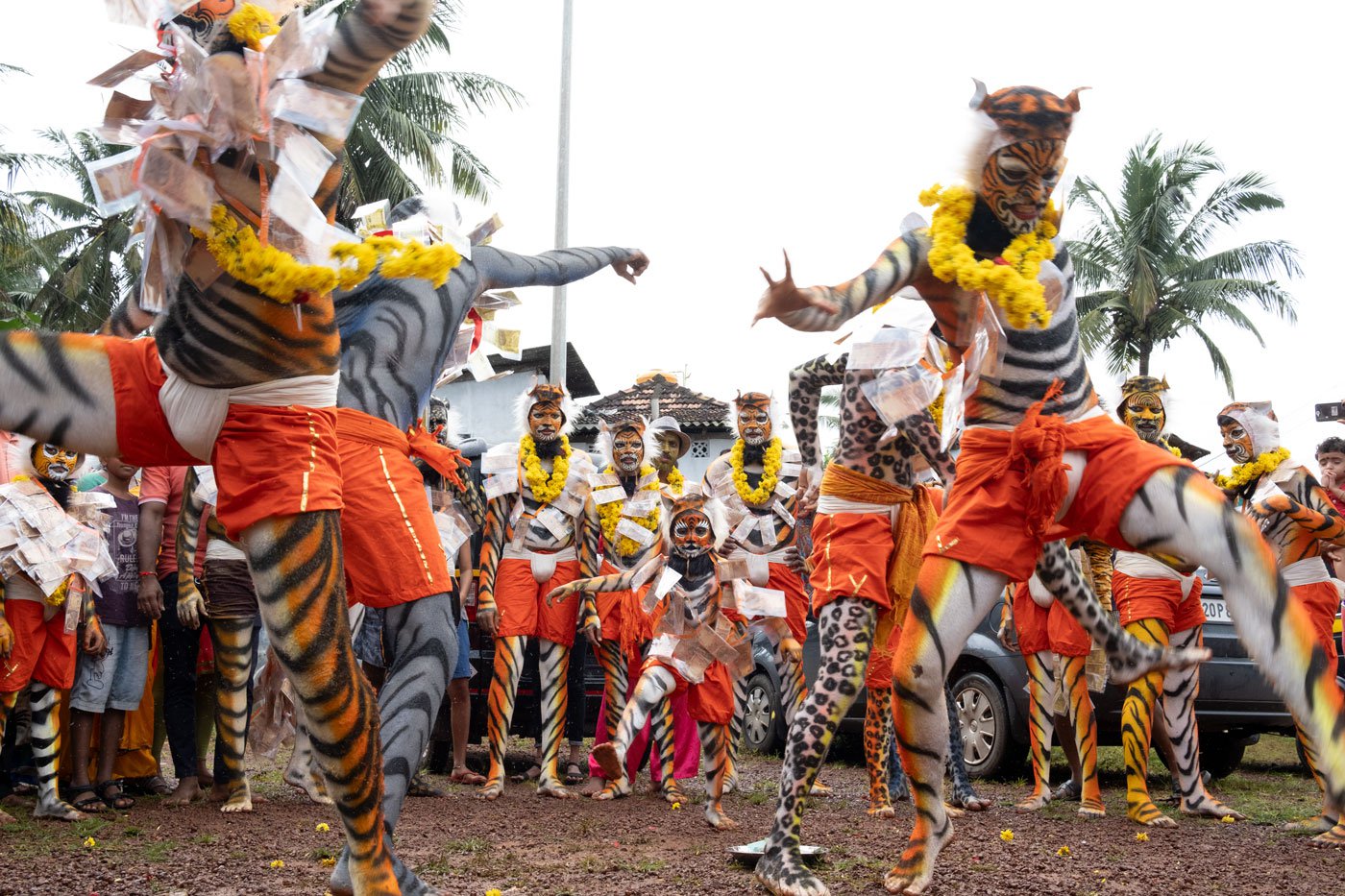
The choreography is so physically demanding that older folks have left it to the young to carry on this traditional dance
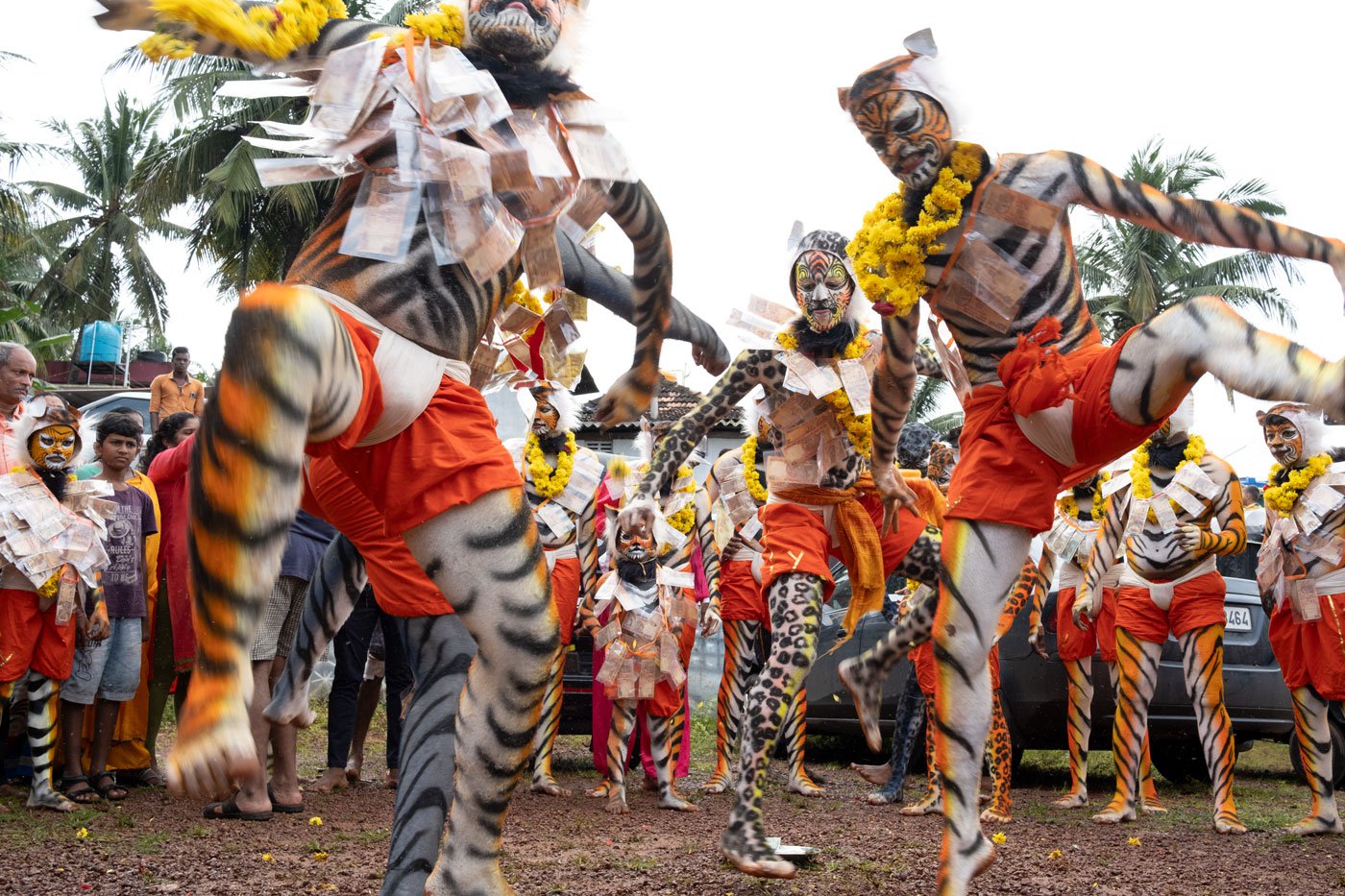
Set to the resonating beats of the tase (drum), people painted as pili, dance to show their reverence as well as entertain
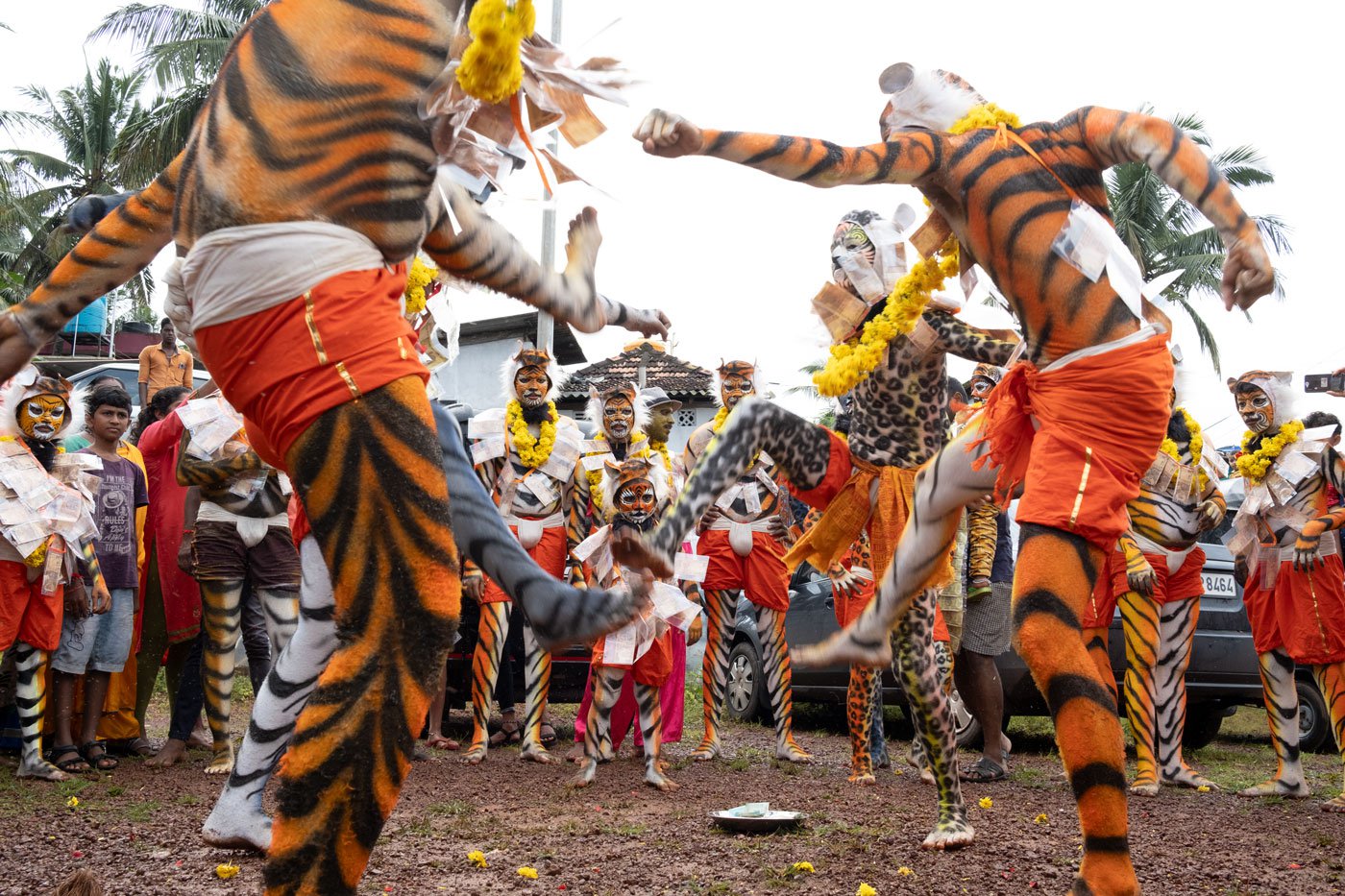
Performing groups were earlier awarded rice and paddy – crops that are commonly grown in coastal Karnataka – for their show. Today money has replaced foodgrains
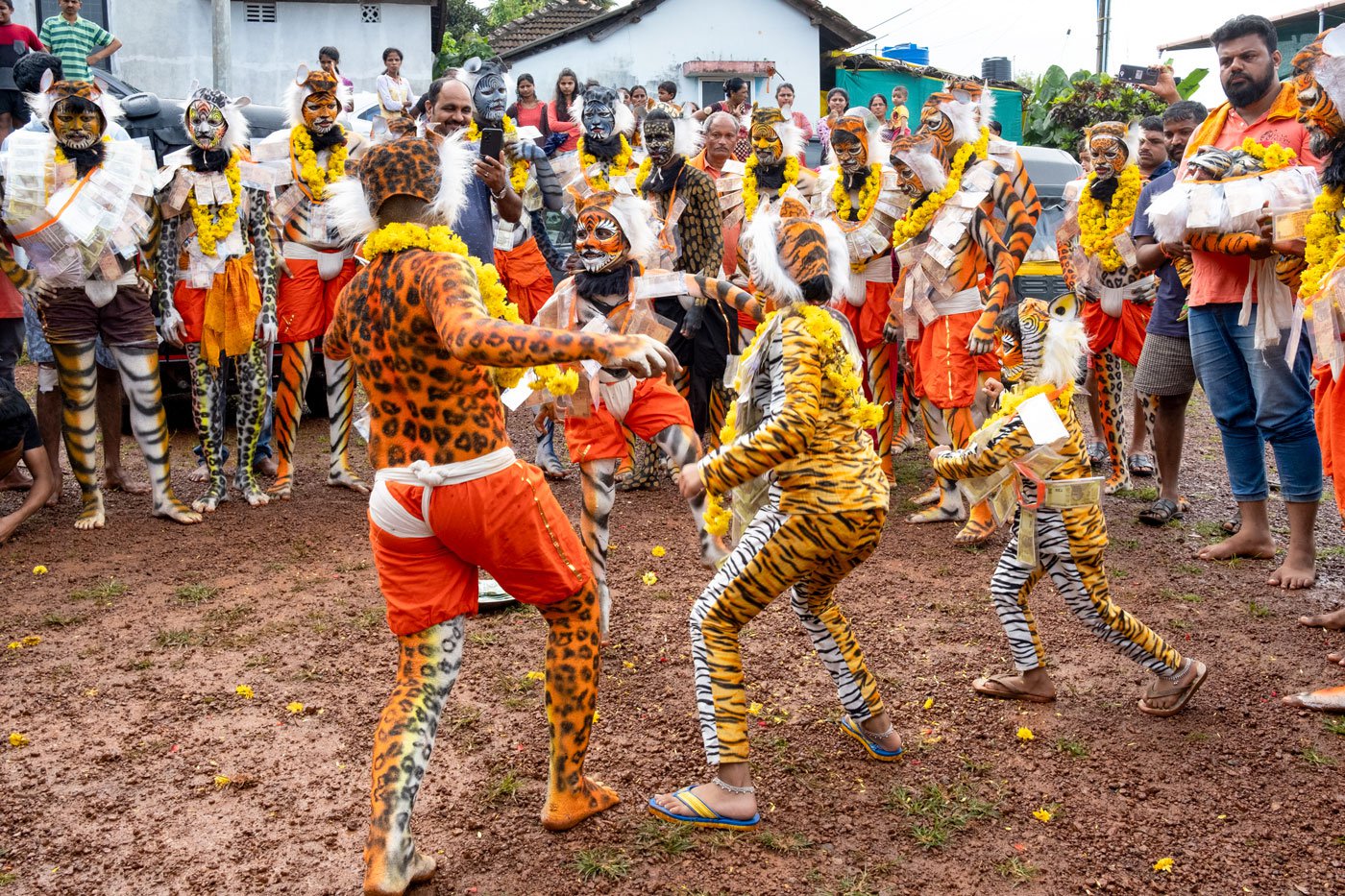
Each performer can earn about Rs. 2,500 for two days. The dancer who performs stunts earns an extra Rs. 6,000

Sandesh's grandmother, Kamala Shetty and mother, Vijaya Shetty, cheering him as he performs pili vesha . Sandesh is a photographer and painter. 'Since the last four years I have started performing pili vesha and will continue performing in the future too,' says the 21-year-old
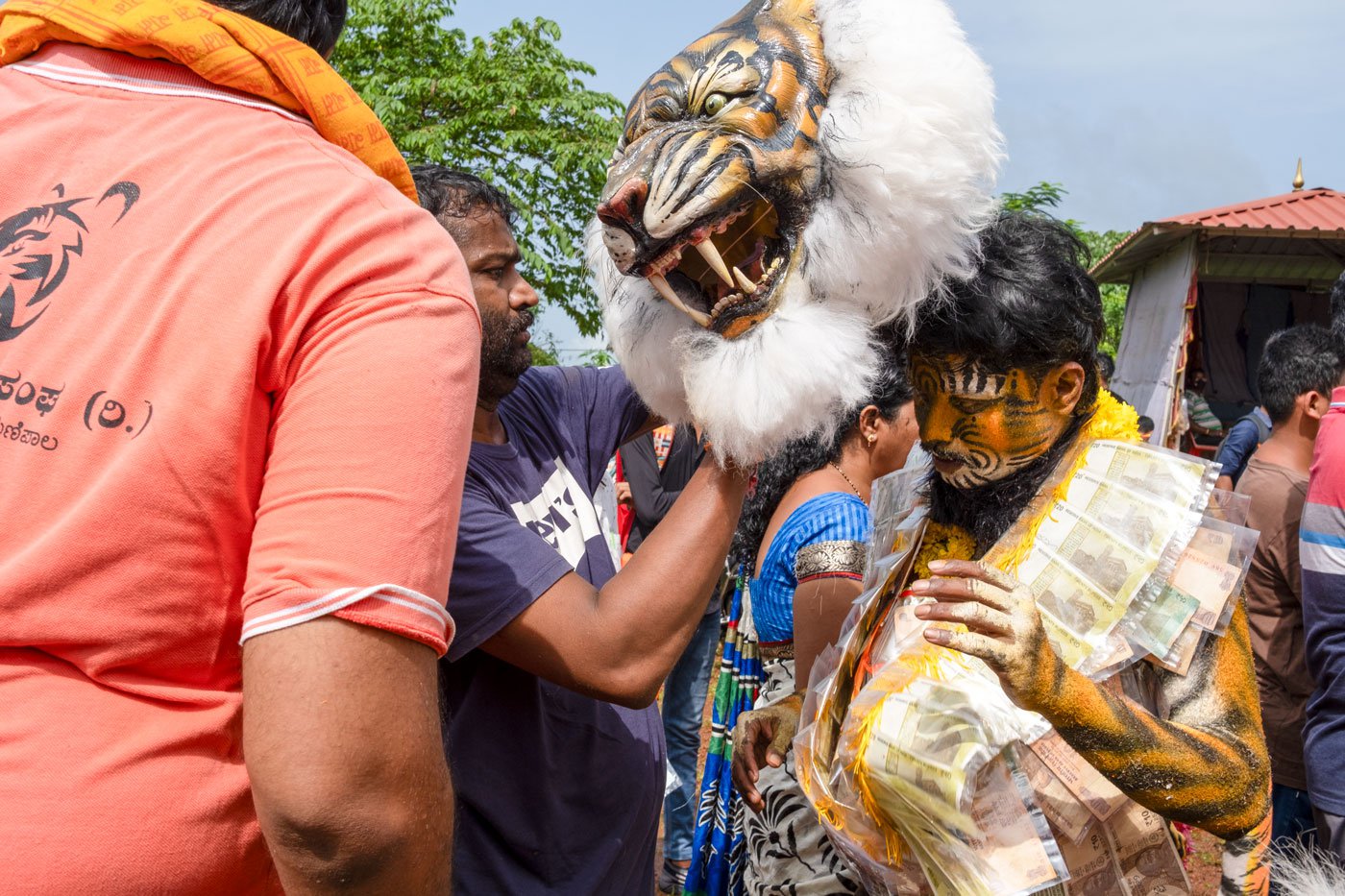
Virendera Shettigar puts on the tiger mask. The one who wears the mask is usually the prime tiger of the group
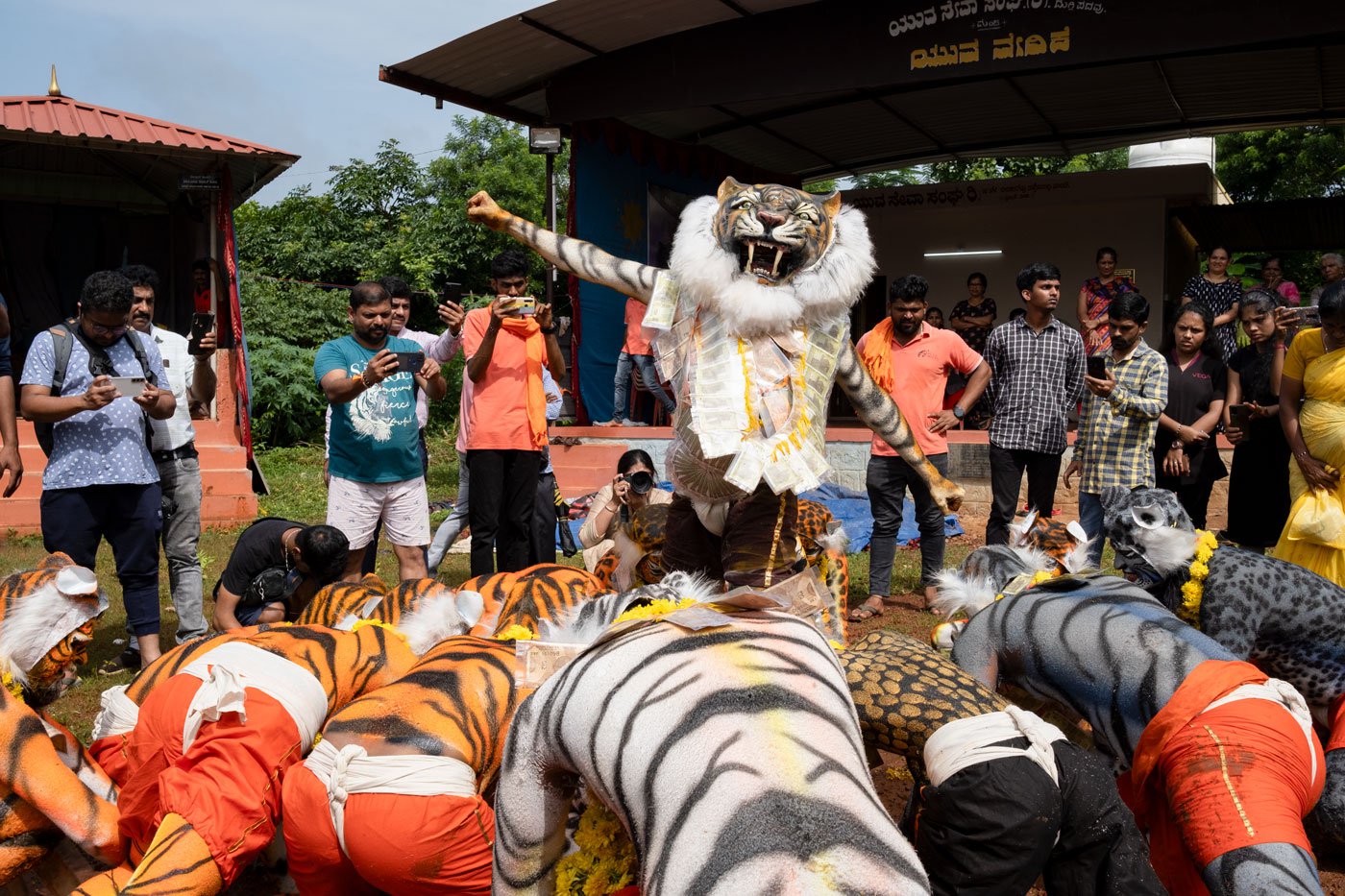
Virendra has been performing pili vesha for the last 22 years . ' The sounds of the drums and the energy around will make you dance to the beats,' he says
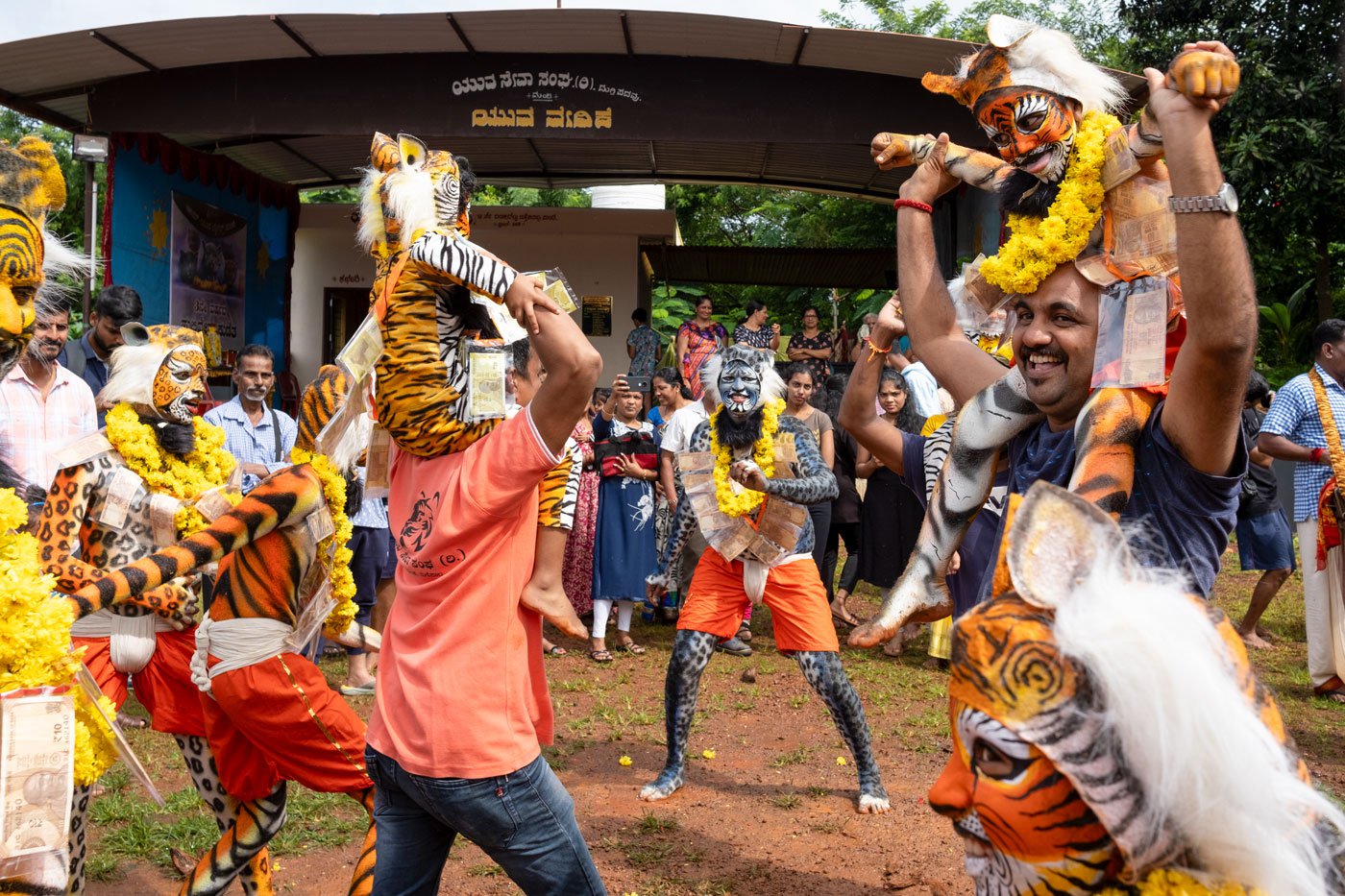
Villagers lift the young tiger dancers and dance to the drum beats
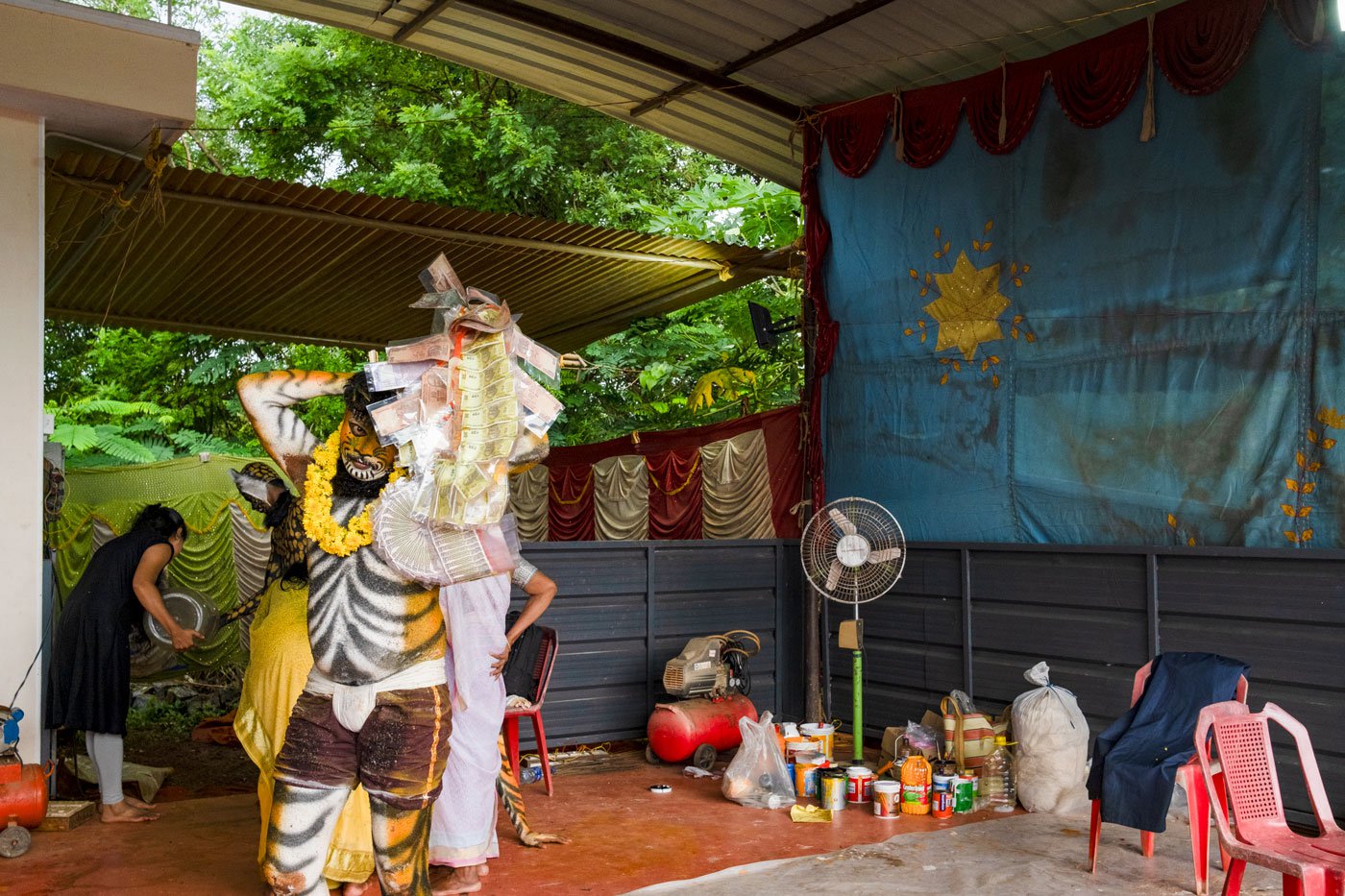
Virendra changing props after the first session of the performance. The 30-year-old works as a distributor at Amazon and encourages young people from his village to perform
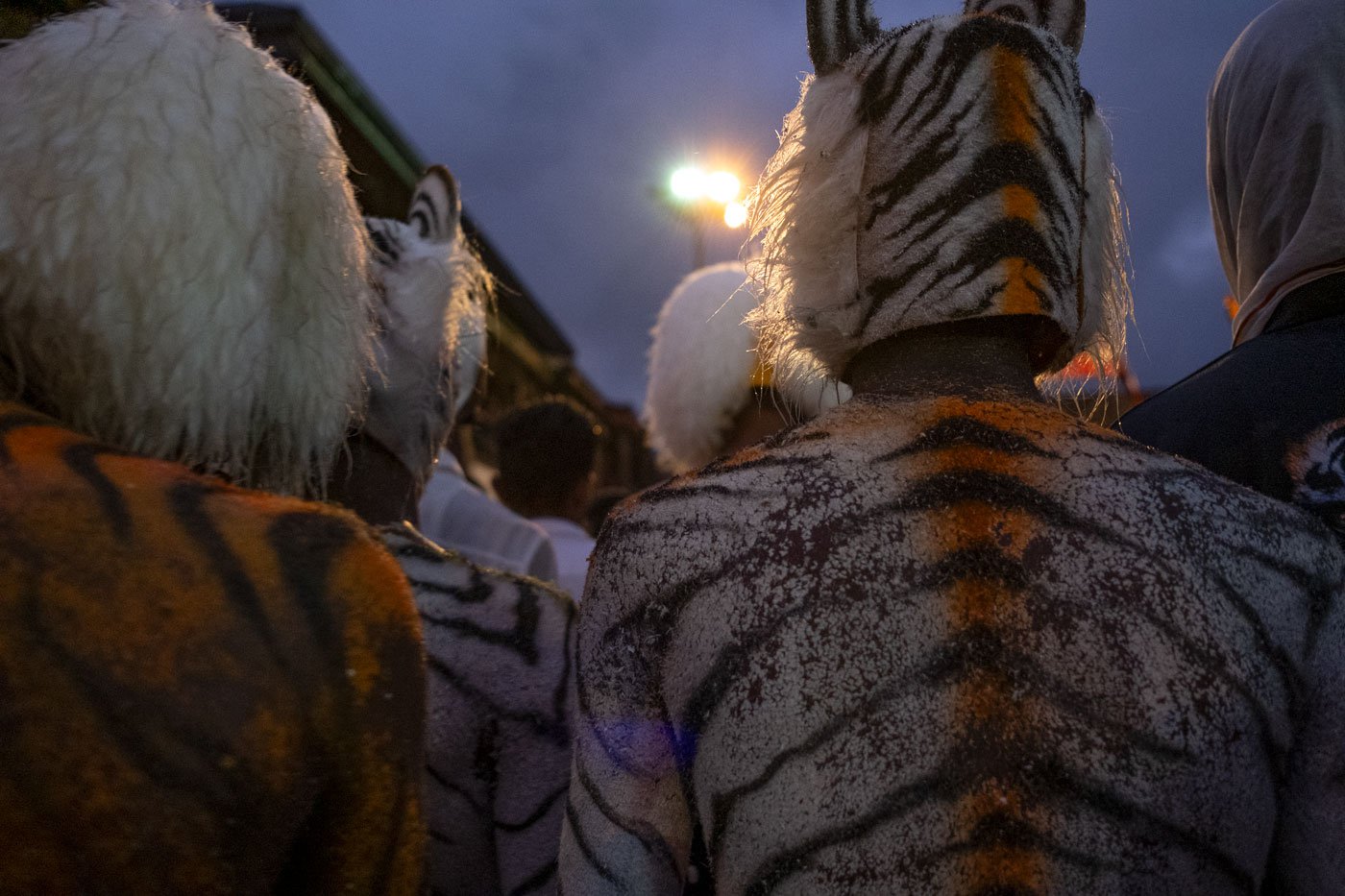
Although public entertainment is a priority for the dancers, the performance adheres to a number of norms to preserve the discipline of this tradition


